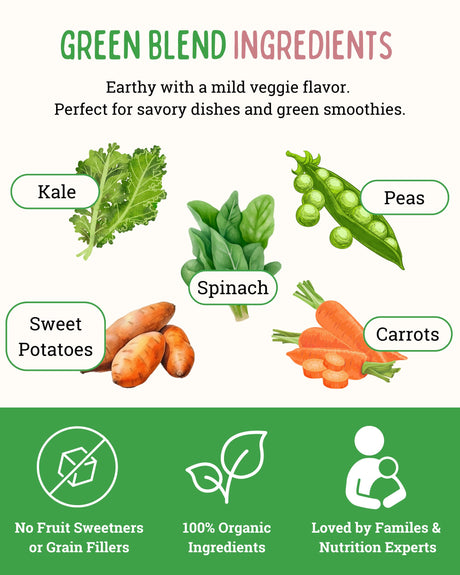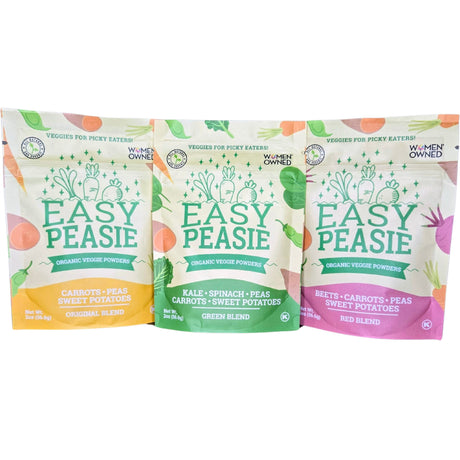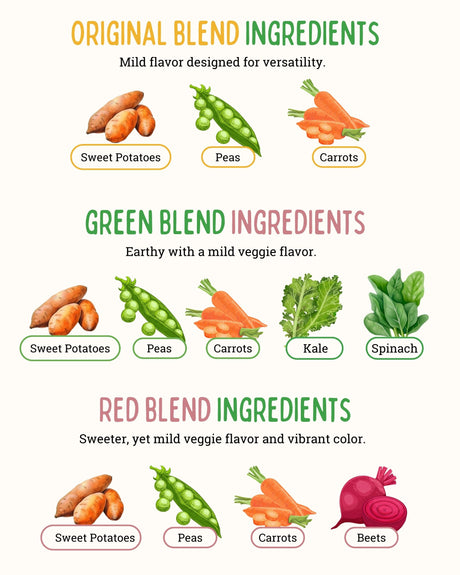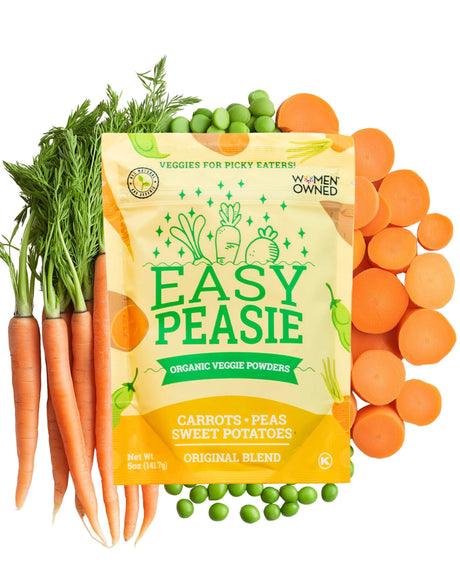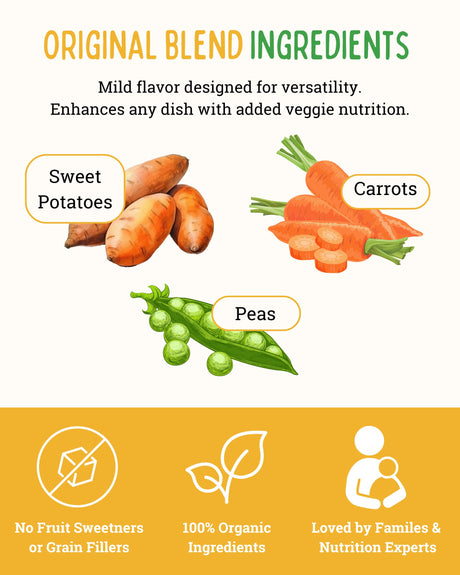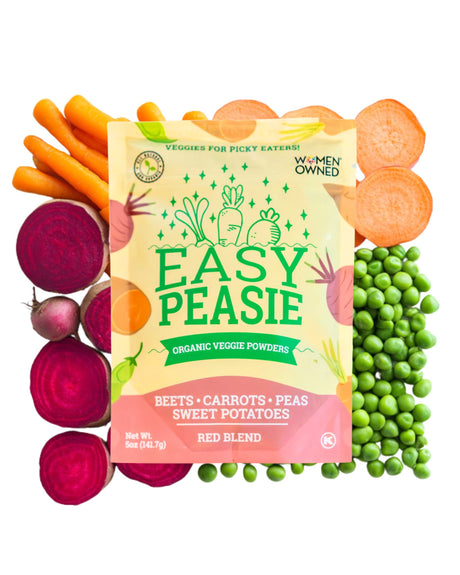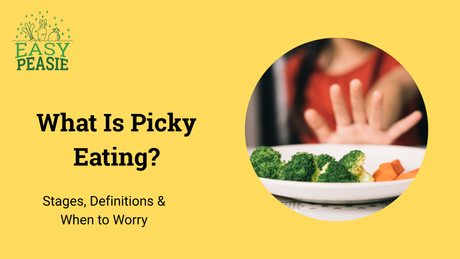Juice and Kids
Juice often finds its way into accompanying our kids' meals as a staple beverage, whether it's a morning glass of orange juice, a refreshing drink after school, or a quick option to toss into a lunchbox.
While juice is often marketed as a healthy choice—packed with vitamins and the sweet, familiar flavors kids love—opinions about its role in kids' health are as varied as the juices themselves. Some praise juice for its nutrient content, while others caution against its high sugar levels and the lack of fiber compared to whole fruits.
With so many mixed messages about juice, it’s easy for parents to feel confused about what’s truly best for their kids. This blog aims to cut through the clutter and offer a clear, balanced view of juice consumption for children. We’ll explore the benefits and potential drawbacks of juice, provide practical tips on how much juice is appropriate, and suggest healthier alternatives to ensure your little ones are getting the best nutrition possible.
Is Juice Good for Kids?
Nutritional Value of Juice
Juice can be a source of important vitamins and nutrients that support your child’s growth and overall health. For instance, many fruit juices are rich in vitamin C, which boosts the immune system and aids in iron absorption. Juices like orange or apple juice also contain potassium, a mineral that helps maintain healthy blood pressure and supports muscle function.
However, while juice does offer some nutritional benefits, it’s important to remember that these nutrients can often be found in more balanced forms in whole fruits.
Juice vs. Whole Fruit
When comparing juice to whole fruits, the differences are striking. Whole fruits provide not only the vitamins and minerals found in juice but also fiber—a key component for digestive health and feelings of fulness (satiety). Fiber helps slow down the absorption of sugar into the bloodstream, preventing the spikes and crashes that can occur after consuming juice.
Eating an apple, for example, will keep your child feeling full and energized longer than drinking a glass of apple juice, thanks to the fiber content.
Healthy Juices for Children
If you choose to include juice in your child’s diet, opting for 100% fruit juice is the best way to go. These juices contain no added sugars, artificial flavors, or colors, making them a better choice than juice cocktails or "fruit drinks," which are often loaded with extra sweeteners.
Look for labels that clearly state "100% juice" and be mindful of serving sizes—4 ounces a day is generally recommended for young children over the age of 2 years. Diluting juice with water is a great way to reduce sugar intake while still offering a flavorful drink. Pediatricians often recommend using equal parts of juice and water at the most, and maybe even leaning toward more water than juice in your dilution.
Understanding the Risks
Sugar Content in Kids' Juice
One of the biggest concerns with juice is its high sugar content. Even 100% fruit juice, while natural, contains as much sugar as soda. For example, a 12-ounce glass of orange juice can contain around 9 teaspoons of sugar—nearly the same as a can of soda!
Excessive sugar intake can lead to a host of health issues in children, including excessive weight gain, increased risk of type 2 diabetes, and a preference for sweet foods, which can make it harder to encourage healthy eating habits.
Harmful Effects of Juice for Kids
Drinking too much juice can have several negative impacts on a child’s health.
The excess calories from sugar can contribute to weight gain and obesity, which are growing concerns among children today. Additionally, juice lacks the fiber that whole fruits provide, which means it doesn’t help children feel full, leading them to consume more calories overall.
Over time, this can increase the risk of developing metabolic conditions such as type 2 diabetes.
Juice and Children's Dental Health
Juice is also tough on your child’s teeth. The natural sugars in juice feed the bacteria in the mouth, leading to acid production that can erode tooth enamel and cause cavities. This risk is heightened when children sip juice throughout the day, constantly exposing their teeth to sugar.
To mitigate these risks, offer juice during meal times rather than as a between-meal snack, and encourage your child to rinse their mouth with water after drinking juice. Use of a straw occasionally will minimize juice contact with teeth which can be helpful, and ensure regular dental check-ups to catch any issues early.
How Much Juice Should Kids Drink?
AAP Recommendations
The American Academy of Pediatrics (AAP) provides clear guidelines on how much juice children should consume based on their age.
For infants under 12 months, juice is not recommended at all, as breast milk or formula should be their primary source of nutrition. For children aged 1 to 3 years, the AAP suggests limiting juice to no more than 4 ounces per day. Kids aged 4 to 6 years can have up to 6 ounces, while those 7 years and older should not exceed 8 ounces per day.
These guidelines help ensure that juice is consumed in moderation, keeping it as an occasional treat rather than a staple in their diet.
Portion Control Tips
Managing juice portions can be a challenge, especially with kids who love their sweet drinks. One effective strategy is to use smaller cups, which naturally limits the amount they can drink at one time. Another tip is to dilute juice with water, gradually increasing the water ratio as your child gets used to the less intense sweetness.
This not only reduces sugar intake but also helps ensure your child stays hydrated without overloading on juice. Encourage juice to be enjoyed with meals rather than as a stand-alone snack, and always pair it with water throughout the day to balance their fluid intake.
Juice Alternatives for Kids
Water and Milk
When it comes to keeping kids hydrated and healthy, water and milk are the best choices.
Water is essential for hydration without adding any calories or sugar to your child’s diet. It’s the perfect drink for quenching thirst and should be the go-to beverage throughout the day.
Milk, whether it’s dairy or a fortified plant-based alternative, provides important nutrients like calcium, vitamin D, and protein, which are crucial for growing bodies. These beverages should be the primary drinks for kids, helping them maintain balanced nutrition without the risks associated with too much juice.
Healthy Juice Alternatives
If your child loves the taste of juice but you want to limit their sugar intake, there are plenty of healthy alternatives to consider. Infused water is a fun and flavorful option—simply add slices of fruits like oranges, strawberries, or cucumbers to a pitcher of water for a refreshing drink that’s naturally low in sugar.
Smoothies made with whole fruits and vegetables are another great option, offering the same delicious taste as juice but with the added benefits of fiber and other nutrients. For a homemade juice blend, consider mixing 100% fruit juice with a splash of water or adding in pureed vegetables for an extra nutrient boost, all while keeping added sugars at bay.
Incorporating Whole Fruits
Encouraging kids to eat whole fruits instead of drinking juice is key to ensuring they get all the nutritional benefits, especially fiber. Start by offering a variety of colorful fruits with meals and as snacks, making them as appealing as possible. You can also get creative with fruit salads, kabobs, or even incorporating fruits into savory dishes like salads or tacos.
By making whole fruits a regular part of their meals, you’re helping your child develop healthy eating habits that will serve them well throughout their lives.
Choosing the Best Juice for Kids
Best Fruit Juice for Kids
When it comes to choosing the best fruit juice for kids, look for options that are made from whole fruits and vegetables, without added sugars.
Juices made from lower-sugar fruits like berries, apples, and pears, or those blended with vegetables like carrots and beets, are great choices. But be cautious in that these juices -- even with their seemingly low sugar content -- can also be a cause of loose stools and frank diarrhea in kids.
For a fun and nutritious option, consider offering your child a mix of vegetable and fruit juice, which can offer a broader range of vitamins and minerals.
Label Reading Tips
Understanding juice labels is crucial for making healthier choices. When shopping for juice, always check the label for added sugars, which can significantly increase the calorie content without adding nutritional value.
Look for phrases like “100% juice” and “no added sugars,” but be mindful of the serving size listed—sometimes, what seems like a single serving can actually contain multiple portions. Additionally, watch out for terms like “juice drink” or “juice cocktail,” as these often contain added sugars and less actual juice.
Organic and Non-GMO Juice Options
For families focused on health and sustainability, organic and non-GMO juices can be appealing. Organic juices are made from fruits grown without synthetic pesticides or fertilizers, which some parents prefer for reducing their child’s exposure to these chemicals.
Non-GMO juices come from fruits that haven’t been genetically modified, aligning with the values of families concerned about genetic engineering of their food. While these options can be more expensive, they offer peace of mind for those prioritizing organic and non-GMO products in their household.
Juice and Meal Planning
Incorporating Juice in a Balanced Diet
Incorporating juice is all about moderation. Rather than serving juice as a stand-alone drink, think about using it creatively in meals. A splash of juice can enhance the flavor of marinades, salad dressings, or even oatmeal.
You can also mix a small amount of juice with sparkling water for a refreshing, lower-sugar drink. By using a splash of juice as a flavor enhancer or in recipes, you can enjoy its taste without consuming large quantities of sugar.
Meal Planning Tips
When planning meals, consider how juice fits into your overall approach to nutrition. It’s important that juice doesn’t replace whole fruits or essential nutrients that your child needs.
Try to offer whole fruits at meals and save juice for special occasions or as a small treat.
Planning balanced meals that include a variety of fruits, vegetables, proteins, and grains ensures that juice remains a complementary part of your child’s meals, rather than a primary source of fruit intake. By being limited and strategic about juice consumption, you can maintain a balanced approach to your child’s nutrition.
The Bottom Line on Juice and Children's Health
Summary
When it comes to juice and kids, moderation is the key. While juice can provide essential vitamins like vitamin C and potassium, it's crucial to remember that it lacks the fiber found in whole fruits and can contribute to excessive sugar intake if not consumed in moderation.
The best options are 100% fruit juices without added sugars, but even these should be diluted and limited according to age-appropriate guidelines. Prioritizing whole fruits and offering juice as an occasional treat rather than a staple is the healthiest approach.
Practical Advice for Parents
To manage juice consumption effectively, make water and milk the primary beverages for your child. When serving juice, stick to small portions and ensure it’s part of a balanced diet that includes plenty of whole fruits and vegetables. Consider using juice in creative ways, like in recipes or diluted with water, to reduce sugar intake.
By being mindful of how and when juice is consumed, you can help your child enjoy the benefits without the risks.
As you navigate your child’s food needs, remember that moderation and mindfulness are key. Juice can be part of your child’s meals, but it’s important to prioritize whole fruits and other nutrient-rich foods. By making informed choices and being intentional about juice consumption, you can support your child’s health and well-being.
We’d love to hear your thoughts on juice consumption for kids! Share your experiences and tips in the comments, and don’t forget to follow Easy Peasie on social media (YouTube, Facebook, and Instagram) for more insights on child nutrition. Explore our additional resources for more ways to keep your family’s meals healthy and balanced.



